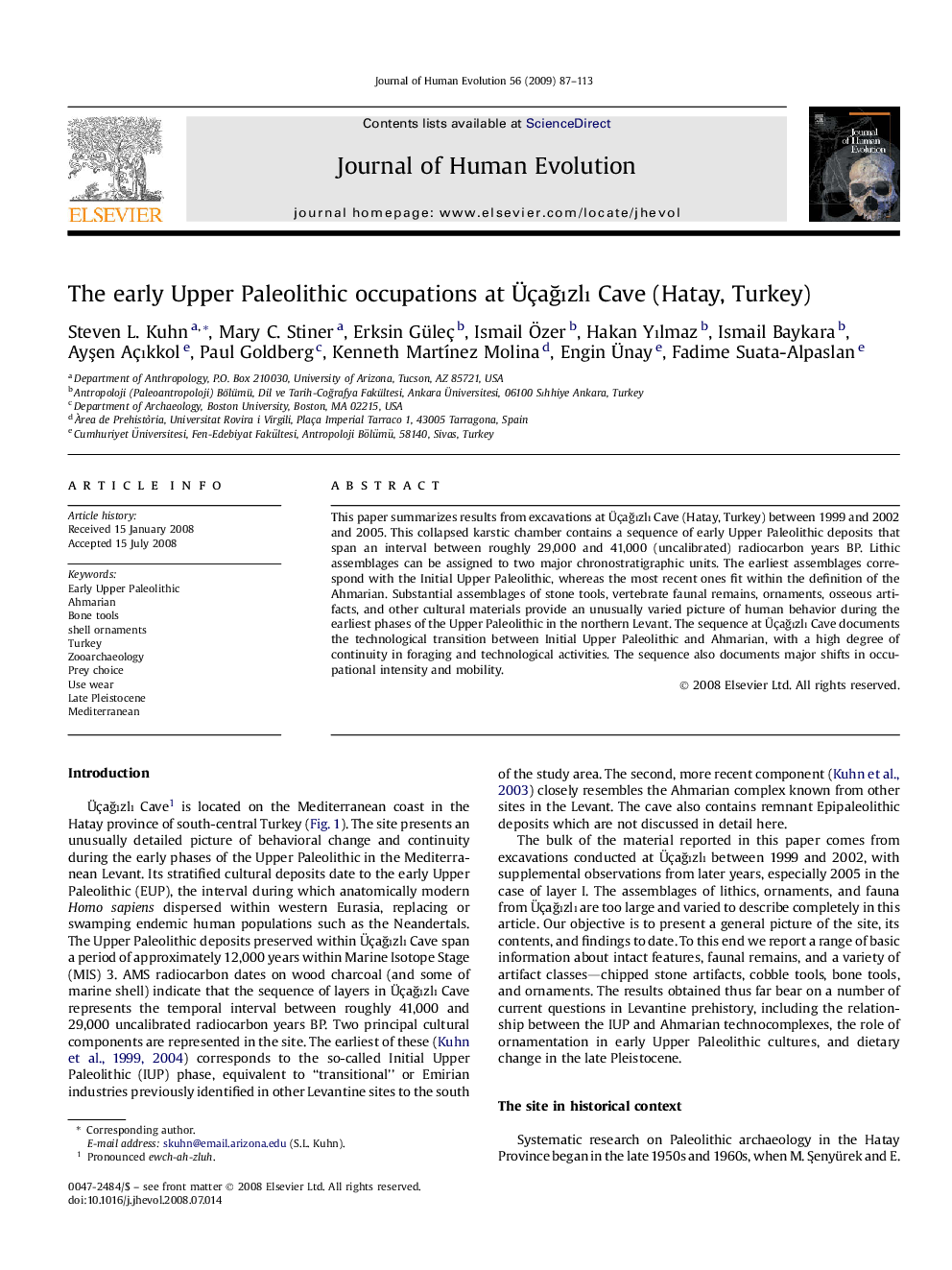| Article ID | Journal | Published Year | Pages | File Type |
|---|---|---|---|---|
| 4557218 | Journal of Human Evolution | 2009 | 27 Pages |
This paper summarizes results from excavations at Üçağızlı Cave (Hatay, Turkey) between 1999 and 2002 and 2005. This collapsed karstic chamber contains a sequence of early Upper Paleolithic deposits that span an interval between roughly 29,000 and 41,000 (uncalibrated) radiocarbon years BP. Lithic assemblages can be assigned to two major chronostratigraphic units. The earliest assemblages correspond with the Initial Upper Paleolithic, whereas the most recent ones fit within the definition of the Ahmarian. Substantial assemblages of stone tools, vertebrate faunal remains, ornaments, osseous artifacts, and other cultural materials provide an unusually varied picture of human behavior during the earliest phases of the Upper Paleolithic in the northern Levant. The sequence at Üçağızlı Cave documents the technological transition between Initial Upper Paleolithic and Ahmarian, with a high degree of continuity in foraging and technological activities. The sequence also documents major shifts in occupational intensity and mobility.
